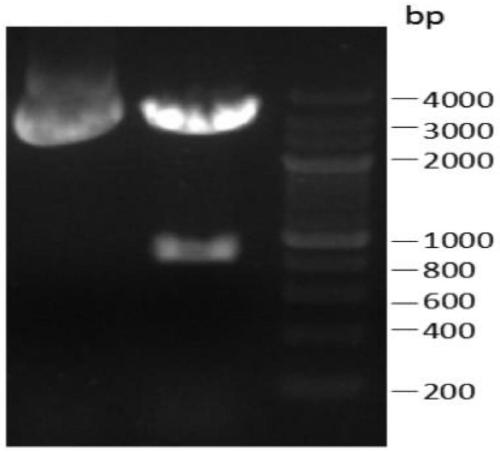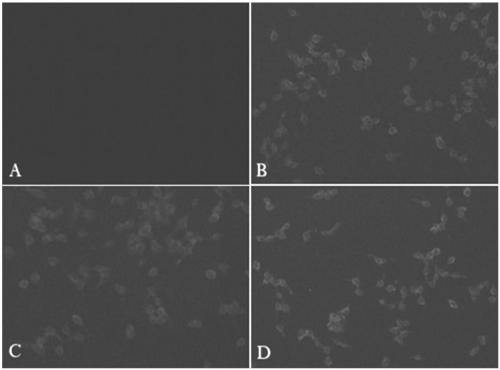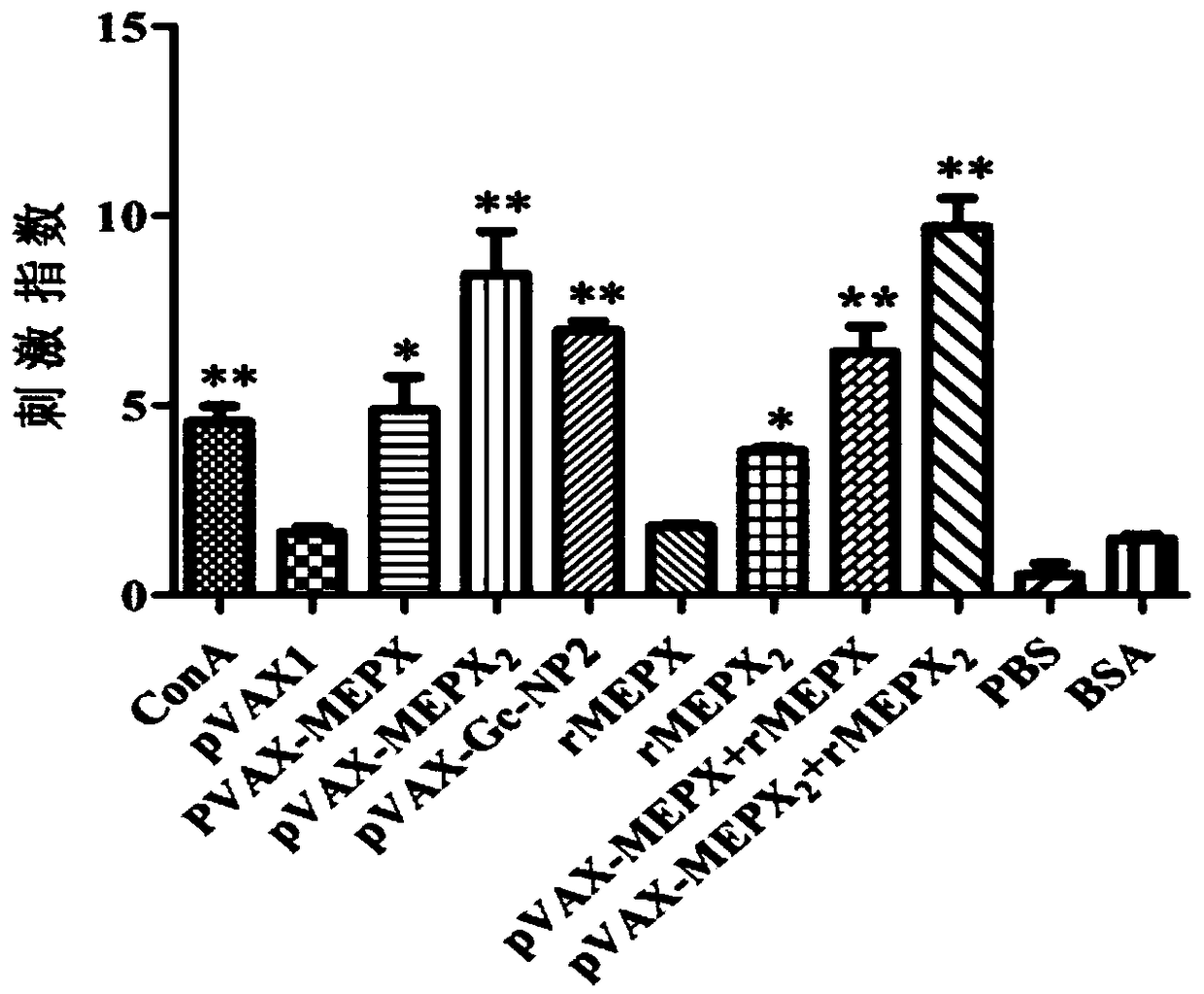Construction and application of Xinjiang hemorrhagic fever virus multi-epitope eukaryotic expression vector pVAX-MEPX2
A technology of eukaryotic expression vector and hemorrhagic fever virus, which is applied in the field of molecular biology and microbiology, can solve the problems of in-depth research limitations of diagnosis, prevention and treatment methods, lack of animal models, high pathogenicity, etc., and achieve improved immunity The effect of low effect, improving immune potency, and avoiding side effects
- Summary
- Abstract
- Description
- Claims
- Application Information
AI Technical Summary
Problems solved by technology
Method used
Image
Examples
Embodiment 1
[0031] Example 1: Preparation of pVAX-MEPX2 vector
[0032](1) The main antigenic positive protein segment NP2 of the nucleoprotein NP identified in the early stage of the XHFV YL04057 strain is concatenated with 6 linear B cell epitopes on the glycoprotein GP (Gn and Gc) through a flexible peptide (Gly-Gly), and the design After becoming a multi-epitope chimeric gene, the MEPX2 gene was synthesized after tandem duplication into a double-copy gene fragment and optimized by Escherichia coli preferred codons;
[0033] (2) performing base synthesis on the optimized gene fragment in step (1);
[0034] (3) Carry out enzyme digestion reaction with BamHI and XhoI restriction endonucleases and eukaryotic expression vector pVAXI empty vector, and introduce the MEPX2 gene fragment obtained in step (2) to construct recombinant eukaryotic expression vector pVAX-MEPX2;
[0035] (4) Transform the obtained recombinant vector pVAX-MEPX2 into E.coli DH5α competent cells through the above step...
Embodiment 2
[0037] Example 2: Cell transfection and identification of pVAX-MEPX2 plasmid
[0038] Transfect endotoxin-free plasmids pVAX-MEPX, pVAX-MEPX2, pVAXⅠ (negative control) and pVAX-Gc-NP2 (positive control) into 293T cells grown to 90%-95% in 24-well plates, according to lipofectamine 2000 product manual to operate. After culturing for 24 hours, the gene expression was detected by indirect immunofluorescence (IFA). After the cells were fixed and permeabilized, the mixed rabbit serum of anti-Gn, Gc and NP and the goat anti-rabbit IgG antibody coupled with FITC were added in turn, and the cells were detected by fluorescence. Microscope observation. The test results are attached figure 2 As shown, the cells transfected with pVAX-MEPX, pVAX-MEPX2 and pVAX-Gc-NP2 were found to have green fluorescence under the fluorescence microscope, while the cells transfected with the empty plasmid pVAXⅠ had no fluorescent substances. figure 2 , indicating that the recombinant eukaryotic plasmi...
Embodiment 3
[0039] Example 3: Detection of Mouse Immunity and Lymphocyte Proliferation
[0040] The 6-8 week old BALB / c female mice were randomly divided into 9 groups, 8 mice in each group, and immunized once every 14 days. Groups a-d are DNA immunization groups: adjust the concentration of a large amount of extracted plasmid DNA to 1000 ng / μL with physiological saline, and inject 50 μL / mouse of the plasmid into the hind leg muscles of mice using an electric pulse gene transfer instrument. Group c is pVAX-Gc -NP2 positive control group, group d is empty pVAXⅠ as a negative control; groups e-f are protein immunization groups (rMEPX, rMEPX2 respectively): adjust the concentration of the purified recombinant protein to 1 mg / mL with PBS, and use an equal volume of Adjuvant (Freund's complete adjuvant FCA for initial immunization, and Freund's incomplete adjuvant FIA for booster immunization) was mixed by ultrasound, and 300 μL / mouse was injected subcutaneously at multiple points on the back ...
PUM
 Login to View More
Login to View More Abstract
Description
Claims
Application Information
 Login to View More
Login to View More - R&D
- Intellectual Property
- Life Sciences
- Materials
- Tech Scout
- Unparalleled Data Quality
- Higher Quality Content
- 60% Fewer Hallucinations
Browse by: Latest US Patents, China's latest patents, Technical Efficacy Thesaurus, Application Domain, Technology Topic, Popular Technical Reports.
© 2025 PatSnap. All rights reserved.Legal|Privacy policy|Modern Slavery Act Transparency Statement|Sitemap|About US| Contact US: help@patsnap.com



